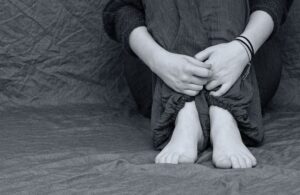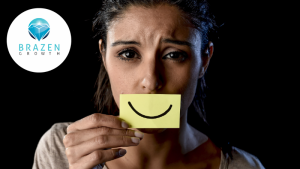We have heard it and research proves that physical activity can improve both physical and mental health. It is easy to say but when our lives are turned upside down by a situation that causes isolation, for whatever reason, how do we bring ourselves to put this into practice?
My lived experience of anorexia, clinical depression and imprisonment posed a challenging situation when the steel doors of the cell were locked for the first time behind me. I had little control of the environment I was in and had never experienced before. I was not even allowed to take my antidepressants into prison. They had to be re prescribed and then that prescription needed to be filled. It was 3 days before I received these and it was at half the dosage that I had been on for the 18 months before.
With the current Covid-19 situation, risk factors are high while protective factors can be limited. The risk factors can include but not limited to:
- Loss of income
- Sleep disturbances
- Decreased self-worth
- Leisure activities taken away
- Risk of homelessness
- Family and relationship pressures
- Increased consumption of alcohol (sales up 300% in Australia)
- Increased domestic and family violence
- Pre-existing mental health issues
- Pre-existing physical health issues
- Isolation with decreased socialisation
- Loneliness

Research shows that 60 minutes of exercise per week could prevent depression by 12-17%. Higher levels of physical activity can lower the risk of depression and anxiety by 27%. (Black Dog Institute)
People that suffer mental health issues have two times higher risk of developing diabetes and cardiovascular disease as alcohol and tobacco usage increases at the same time that sleep and physical activity increases.
So, with mounting risk factors, decreased motivation, lack of resources and for those that have limited experience of being physically active, how do you even contemplate starting to be active during these times of isolation?
IT IS TOUGH!! But if you are thinking about it because you know that exercise helps then that is a great start! If you then find you are putting on a pair of shorts and a T-shirt with the intention to exercise but sit not being bothered and you do this for a week, then that is progress! Progress is important!
I knew full well that my mental health could spiral being locked up 23 hours a day, with only one hour outside. That hour included lining up to get medication, and jail issue clothing if I needed it. I also knew that with many things out of my control, I was at a very high risk of re-developing eating disorder behaviours.
Before being incarcerated my mental health plan included antidepressants, regular levels of appropriate exercise (for me this was resistance training), a healthy diet to fuel my body and psychological treatment. In a prison environment I could not control the food I was given and did not have weekly psychological sessions. In fact, I only had 2 in total over 11 months in there.
My thoughts were the first thing I had to control. This was not instantaneous, and I had very many ups and downs. I knew that if I devised a regular routine of appropriate levels of exercise within my constraints of time, space and resources, then that would be helpful. I used all the body weight exercises I knew and looked for what I had to use. If it was locked in the 3 x 1.5m cell, it was body weight, a chair and the edge of the bedframe. At Silverwater women’s correctional centre, I had a steel lattice enclosure that I used to do chin ups.
When I was moved to different sections of the prison, I always looked for what other things I could use. I found rocks that I used to lift and even put them in a pillowcase that I could wrap around my hand to use as if I would a dumbbell. Once I found 2 empty 5L bottle’s, filled them with water and placed them at either of a mop stick! I could now do some exercises with a makeshift barbell!

If I had time in the hour out, I would run around the fenced perimeter of the prison grounds, or I would do sprint intervals.
Notice earlier I mentioned appropriate levels of exercise. This refers to none as well as excessive. Even in isolation, if someone is at risk of an eating disorder, inappropriate levels of exercise will negatively impact mental health if your thoughts are not healthy.
This period of isolation is not as extreme as prison and we have access to many resources to get you started. There are many online and virtual real time exercise sessions that you can participate in. You can go outside and walk, run or exercise wherever you are. Look at what you have in your home to use for resistance training or if you can afford by some bands or any other equipment depending on your level of fitness and experience.
Start looking online! Here is a start:
- Body Weight Exercises
- Online Workouts
- Or search for PT’s doing live virtual sessions that you can join!
Find a buddy to be accountable to. Keep track of your mood. Reach out for professional help if needed. And remember … Don’t beat yourself up .. progress may be two steps forward and one backwards. It is progress.



